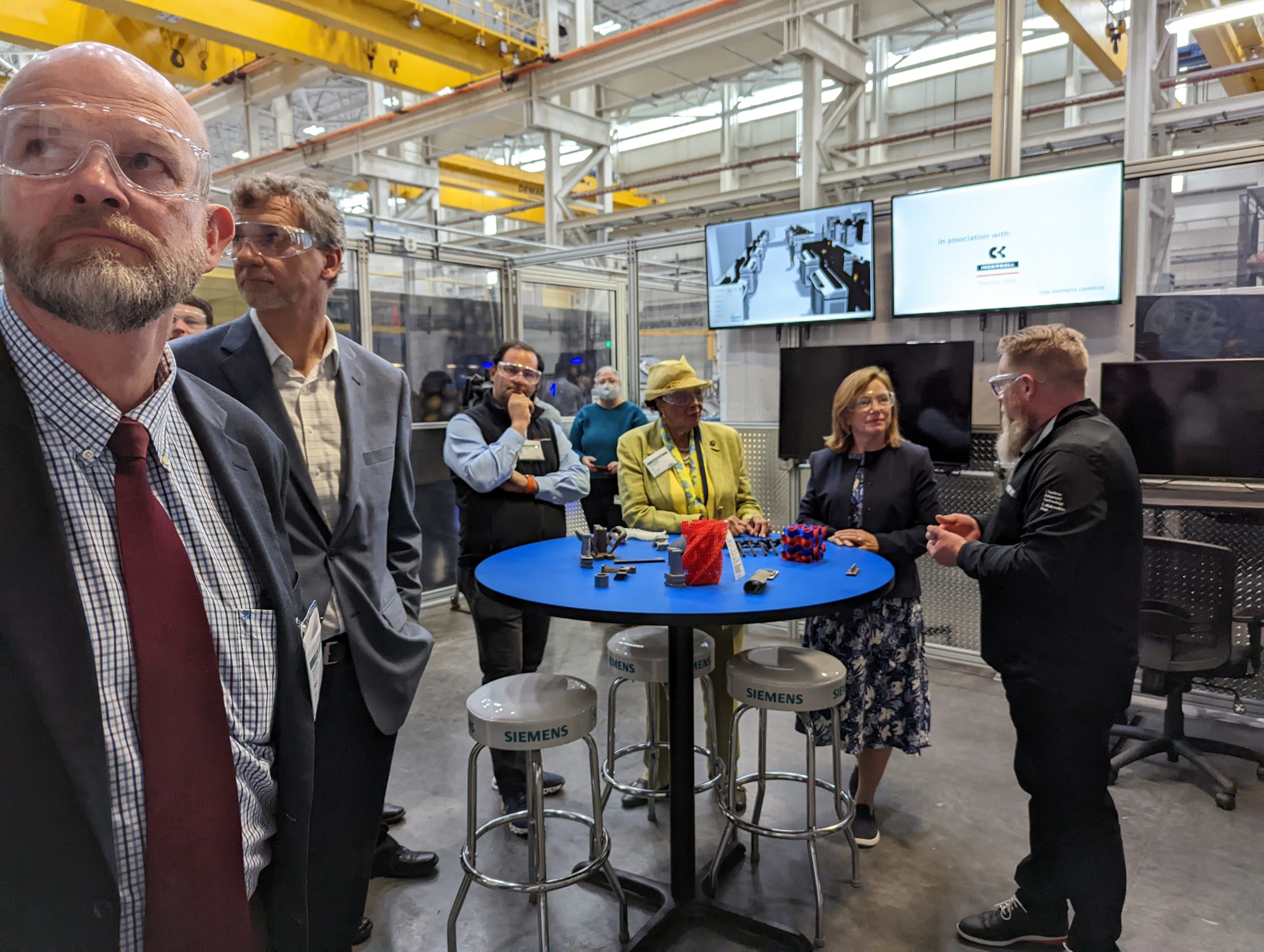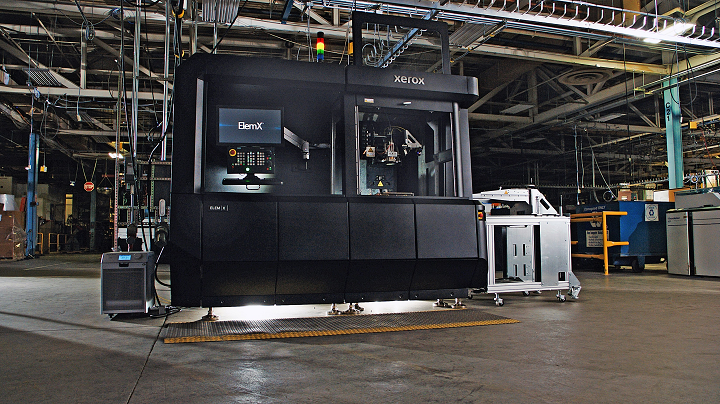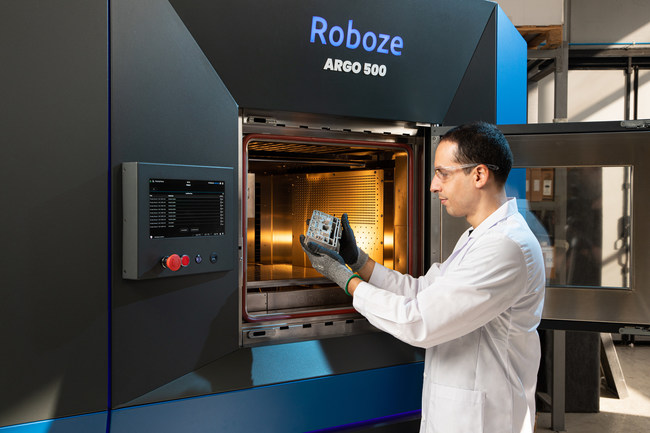Siemens has already had a substantial role in the additive manufacturing (AM) industry for some time. Not only has the German technology company seen its industrial controls integrated into countless 3D printers, but its software is involved in everything from design to production to quality control. However, more recently, the company’s moves in AM have become bigger and much more visible.
The latest is the opening of the Charlotte Advanced Technology Collaboration Hub (CATCH) in Charlotte, NC. Led by Siemens Digital Industries (DI), Siemens Technology and Siemens Energy, the site is a new research and development facility meant to aid customers in the industrialization of AM. To learn more about the location, we spoke to members of the Siemens team, Dr. Hallee Deutchman, Head of Research in Materials and Industrialized Manufacturing (US) for Siemens Technology, and Tim Bell, Additive Manufacturing Business Manager, Siemens Digital Industries.

Pictured alongside Tim Bell on the right are CEO of Siemens USA Barbara Humpton and congresswomen Dr. Alma Adams (NC-12). Image courtesy of Siemens.
Siemens itself is the largest industrial manufacturing company in Europe, with about 303,000 employees around the world and €62 billion in revenues, as of 2021. Siemens Energy, however, is a separate corporation that was spun off in 2020. It employs 91,000 people globally and boasted revenues of €28.5 billion in 2021.
The CATCH center demonstrates that the businesses still work together and both continue to have increasingly important roles in 3D printing. Bell acknowledged that, as AM matures, no single party will be able to advance it sufficiently for serial production. Instead, multiple stakeholders will need to collaborate to industrialize various aspects of various AM processes.

From the CATCH grand opening, a Xerox ElemX machine in operation. Image courtesy of Siemens.
“[The AM sector] is the wild, wild west, and nobody out there has managed to tame it alone. So, what we wanted to do was come up with a central hub, where we could collaborate with machine OEMs, end users and institutions to solve the hard problems that are preventing additive or become becoming a serial production process in some applications,” Bell said.
CATCH is the latest of Siemens’ six AM centers, but it is the only one located within a working factory. The larger Siemens Charlotte Energy Hub is a million square feet of industrial operations dedicated to repairing the multinational’s massive turbines. CATCH is located within a tiny sliver of that area, where it acts as an R&D lab meant to drive the cutting edge of manufacturing. In turn, Siemens is working with companies that fit into that vision. Putting the “collaboration” in CATCH so far are OEMs ExOne, Xerox, and Roboze.

Xerox ElemX liquid metal 3D printer equipped with Siemens SINUMERIK CNC control system. Image courtesy of Xerox.
“When you look at CATCH, you notice that it is a next generation additive facility. We are not a museum. We are not a facility with beautiful white floors and white walls that people can come in and see what additive does in an industrial setting,” Deutchman explained. “Rather, we are at the end of the repair line for Siemens Energy gas turbines, which are the size of a large car. We are dirty. And the intention is for all of our machines to be at the cutting edge of additive. So, not a lot of work with modalities that are very well established, like laser powder bed or electron beam powder bed, but really on what’s coming next. We want to learn how to satisfy customers, both internal and external, and solve problems that aren’t easily achievable with today’s technology.”
Bell pointed out that these partners are often chosen to tackle a specific project either for internal or external customers, whether related to material or process development or because the existing manufacturing method isn’t sufficient. The Siemens DI team then builds up the process and hands it off for a production application.
That was the case for binder jetting from ExOne. Siemens is in the process of developing material for the process, then scaling it up to hand off to a customer to produce large parts. With Roboze, Siemens is tackling the problem of long lead times for steel components. Obviously, PEEK polymers can replace metal parts at a lower cost with a faster turnaround due to its high strength and resistance to extreme temperatures and volatile chemicals.

Roboze’s Argo 500 3D printer. Image courtesy of Roboze.
How this works from a business standpoint varies depending on whether clients are within Siemens or outside of the business.
“For some [customers], especially our internal customers, the role of Siemens Technology is corporate R&D. We incubate and evaluate new technologies and interesting solutions for the Siemens business units. In that situation, Siemens Energy is an important partner in that work,” Deutchman said. “From our perspective, it’s our job to incubate, take on the risk, do cool stuff, and break it, so that it can be industrialized to production and then they can actually make something real.”
As for outside clients, Siemens will typically develop its own products to sell to others. However, it may license its more sophisticated tools, such as a physics-based simulation tool that is currently in development. Whereas most simulation software offers a visual representation of a 3D printing process, this program will incorporate multiple levels of physics of a machine.
This builds off of not only Siemens’ expertise in software, but nearly 20 years of experience as a user of AM. The company has been relying on powder bed fusion and directed energy deposition for its turbine engine business. In turn, the company has been able to apply its manufacturing expertise across the entirety of the production workflow.
“Siemens has developed a complete end-to-end solution, meaning a software tool chain that leads right into an automation connection, back to a software tool chain for monitoring, planning, and quality feedback. We’re the only company in the world that can manage additive from a PLM perspective, all the way to the end to the industrial internet of things and linking that together. That gives us a leg up on how things work.”
In particular, this means that Siemens can actually execute the use of digital twins. The company is able take the operations of physical machines and create digital twins of the process simulation, in addition to simulation of the actual component. This is becoming increasingly essential to the industrialization of AM, as predicting and compensating for the physics of 3D printers ensures that finished parts actually match their intended designs.
Naturally, this is only a small piece of the large workflow that Siemens plans on tackling. Beyond simulating the machines themselves, the company can simulate entire factories. Using edge computing, it is possible to capture the data coming out of a powder bed system and filter out the unnecessary information. This could be scaled up to multiple machines and entire factories using MindSphere Cloud.
Beyond edge and cloud computing, the German giant has access to other advanced tools. Siemens DI’s Future Factory team can also introduce new methods of non-destructive testing, inspection, and quality control to further industrialize additive technology. Augmented, virtual, and mixed reality can be applied to examine AM in new ways. All of this is driven by a massive tech company that has the industrial clout that few others could introduce to 3D printing.
This includes the support of Siemens Financial Services (SFS), the multinational’s financing arm. SFS supplied CATCH with the financing solution necessary to lease several of the 3D printers in the lab. The financing group sees AM as a strategic priority as digital manufacturing continues to evolve.
According to the Siemens team, CATCH already has its hands full with additive work. The facility only just opened, but it can’t take on much work for the quarter. This bodes well for the future of the site, which, in turn, bodes well for Siemens and the 3D printing industry at large.
Subscribe to Our Email Newsletter
Stay up-to-date on all the latest news from the 3D printing industry and receive information and offers from third party vendors.
You May Also Like
Precision at the Microscale: UK Researchers Advance Medical Devices with BMF’s 3D Printing Tech
University of Nottingham researchers are using Boston Micro Fabrication‘s (BMF) 3D printing technology to develop medical devices that improve compatibility with human tissue. Funded by a UK grant, this project...
3D Printing Webinar and Event Roundup: April 21, 2024
It’s another busy week of webinars and events, starting with Hannover Messe in Germany and continuing with Metalcasting Congress, Chinaplas, TechBlick’s Innovation Festival, and more. Stratasys continues its advanced training...
3D Printing Webinar and Event Roundup: March 17, 2024
It’s another busy week of webinars and events, including SALMED 2024 and AM Forum in Berlin. Stratasys continues its in-person training and is offering two webinars, ASTM is holding a...
3D Printed Micro Antenna is 15% Smaller and 6X Lighter
Horizon Microtechnologies has achieved success in creating a high-frequency D-Band horn antenna through micro 3D printing. However, this achievement did not rely solely on 3D printing; it involved a combination...





























